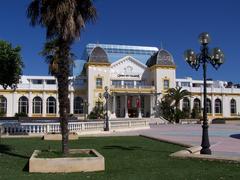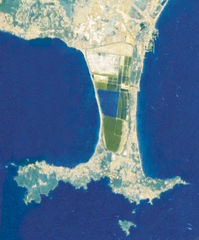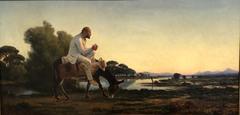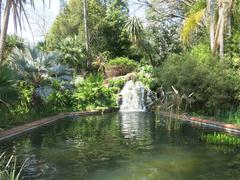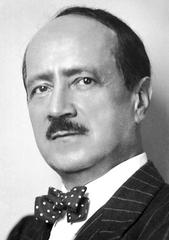Villa Noailles Visiting Hours, Tickets, and Guide to Historical Sites in Hyères, France
Date: 15/06/2025
Introduction
Villa Noailles, perched atop the hills of Hyères in southeastern France, is an enduring icon of early modernist architecture and a dynamic center for contemporary arts. Commissioned in the 1920s by the visionary couple Charles and Marie-Laure de Noailles and designed by the renowned architect Robert Mallet-Stevens, the villa broke with tradition by embracing geometric simplicity, open-plan living, and innovative features such as an indoor swimming pool and squash court. Over nearly a century, Villa Noailles has served as a gathering place for some of the 20th century’s most influential artists, from Man Ray and Salvador Dalí to Alberto Giacometti, and continues today as a public arts institution hosting internationally acclaimed festivals and exhibitions. This comprehensive guide details Villa Noailles’ architectural highlights, artistic legacy, visiting hours, ticketing, accessibility, and tips for making the most of your visit to this unique landmark on the French Riviera. (Wikipedia, Villa Noailles Official, AAZ Galerie, Andrew Harper)
Table of Contents
- Introduction
- Historical Overview and Architectural Vision
- Key Architectural Features
- Artistic Legacy and Collaborations
- Evolution and Restoration
- Villa Noailles Today: Arts Center and Festivals
- Visiting Information: Hours, Tickets, Accessibility
- Visitor Experience Highlights
- Practical Tips and Nearby Attractions
- FAQs
- Conclusion and Call to Action
- References and Further Reading
Historical Overview and Architectural Vision
Villa Noailles was commissioned in 1923 by Charles and Marie-Laure de Noailles, prominent patrons of the arts with deep ties to the Parisian avant-garde. The couple envisioned a summer residence that would serve both as a private retreat and an experimental ground for modernist ideas in architecture and design (Wikipedia; AAZ Galerie). Architect Robert Mallet-Stevens was tasked with bringing this vision to life, resulting in a residence that rejected classical ornamentation in favor of clean lines, functional forms, and seamless integration with its hillside setting overlooking the Bay of Hyères (Andrew Harper). Construction began in 1923 and continued into the early 1930s, with the villa opening as a radical statement of modern living.
Key Architectural Features
Modernist Innovations
Mallet-Stevens’ design for Villa Noailles is characterized by flat roofs, ribbon windows, and a striking interplay of volumes, creating a dynamic silhouette and maximizing natural light (visitvar.com). The villa’s open-plan layout, use of reinforced concrete, and cantilevered terraces were groundbreaking for their time, offering both privacy and generous communal spaces.
Indoors, the villa boasted modern amenities rare for private homes in the 1920s: an indoor swimming pool with retractable glass walls and a squash court. The interiors were furnished with custom pieces and avant-garde artworks, reflecting the Noailles’ commitment to a holistic modernist lifestyle (villanoailles.com).
The Cubist Garden
A defining feature of the estate is its triangular Cubist garden, designed by Gabriel Guévrékian. With its geometric flower beds, colored ceramics, and the centerpiece sculpture “La Joie de Vivre” by Jacques Lipchitz, the garden exemplifies the marriage of art and nature and remains a landmark of early 20th-century landscape design (france-voyage.com). Restored in 1986, it continues to delight visitors with its unique geometry and panoramic views.
Artistic Legacy and Collaborations
From its inception, Villa Noailles was more than a home—it was a crucible for artistic innovation. The Noailles invited leading artists and designers such as Man Ray, Jean Cocteau, Salvador Dalí, Thérèse Bonney, Oscar Dominguez, and Jacques Lipchitz to contribute to its interiors and gardens (Wikipedia; Andrew Harper). The villa appears in Man Ray’s 1929 film Les Mystères du Château de Dé, a testament to its influence on the avant-garde movement (STIRworld). The tradition of artistic collaboration continues today through residencies, exhibitions, and periodic reimaginings by contemporary designers such as Pierre Yovanovitch (Architectural Digest).
Evolution and Restoration
During World War II, the villa was occupied and repurposed, later returning to the Noailles family until Marie-Laure’s death in 1970 (Wikipedia). The city of Hyères acquired the property in 1973, recognizing its architectural and cultural value. Extensive restoration campaigns have since preserved both the villa’s original features and its role as a living arts center, with the Cubist garden restored in 1986 and major public reopening in 2003 (villanoailles.com).
Villa Noailles Today: Arts Center and Festivals
Now a “Centre d’art contemporain d’intérêt national,” Villa Noailles is a vibrant platform for contemporary art, design, fashion, and photography (cotedazurfrance.com). Key annual events include:
- International Festival of Fashion, Photography and Accessories – Hyères:
An internationally recognized event for emerging designers and photographers; the 40th edition takes place in October 2025 (premierevision.com). - Design Parade Hyères and Toulon:
Celebrating innovation in design and interior architecture, the festival runs in June and showcases emerging talents (villanoailles.com). - Temporary and Permanent Exhibitions:
The villa hosts solo and group shows by prominent contemporary artists and designers, including upcoming exhibitions by Jaime Hayon (hayonstudio.com). - Workshops and Family Programs:
Year-round workshops for all ages foster creativity and engagement (provenmed.com).
Visiting Information: Hours, Tickets, Accessibility
Opening Hours (Summer 2025)
- Wednesday to Sunday: 2:00 PM – 7:00 PM
- Thursday extended: 3:00 PM – 8:00 PM
- Closed: Monday and Tuesday
- Guided Tours: At 3:00 PM and 5:00 PM on open days; no reservation required (villanoailles.com)
Tickets
- Admission: Free for all exhibitions, events, and tours (provenmed.com)
Accessibility
- Mobility: Partial wheelchair access with ramps and elevators; some historic areas may be challenging. Prior arrangement is recommended for visitors with reduced mobility (provenmed.com).
Visitor Services
- Bookstore & Boutique: Open Wednesday to Sunday, 1 PM – 6 PM; offering exhibition catalogs, books, and design objects (villanoailles.com).
- Workshops: For children, teens, and families; group tours by appointment.
- Facilities: Restrooms on-site; no café, but Hyères town offers dining options nearby.
Visitor Experience Highlights
- The Cubist Garden: A geometric masterpiece and unique photography spot, blending art and landscape (tourisme-varois.com).
- The Pool Terrace: Features a mural by Oscar Dominguez; a photogenic highlight of the villa.
- Salon Rose & Reading Room: Restored interiors with period furnishings and contemporary art.
- Rooftop Terraces: Offer sweeping views of Hyères, the Mediterranean, and the Iles d’Or.
- Immersive Art and Design: Rotating exhibitions ensure each visit offers something new.
Practical Tips and Nearby Attractions
Getting There
- On Foot: About a 20-minute uphill walk from Hyères’ historic center.
- By Car: Limited parking near the villa; public transport options available (destinationunknown.life).
- Address: 47 Montée Noailles, 83400 Hyères, France
Nearby Historical Sites
- Hyères Old Town: Colorful medieval streets, Saint-Paul church, Templar tower.
- Château d’Hyères: Medieval castle ruins with panoramic views.
- Pic des Fées Observatory: Scenic viewpoint close to the villa.
- Château Saint-Pierre & Villa Romaine: Spaces for prototyping, research, and special events (villanoailles.com).
Best Time to Visit
Spring and autumn offer mild weather and fewer crowds; summer features extended hours and major festivals.
Amenities
No on-site café; dining options available in Hyères below. Picnicking not permitted within the villa or gardens.
Frequently Asked Questions (FAQ)
Q: What are Villa Noailles’ visiting hours?
A: Wednesday to Sunday, 2:00 PM – 7:00 PM (summer); Thursday until 8:00 PM. Closed Monday and Tuesday. Check the official website for seasonal updates.
Q: Is admission free?
A: Yes, entrance to all exhibitions, events, and guided tours is free.
Q: Is Villa Noailles wheelchair accessible?
A: Partial access; contact in advance for assistance or specific needs.
Q: Are guided tours available?
A: Yes, free tours in French and English run at 3 PM and 5 PM on open days; group tours by appointment.
Q: Where can I park?
A: Limited parking at the villa; public transit or walking from the old town is recommended during busy periods.
Q: Can I take photos?
A: Photography is permitted in most areas; some temporary exhibitions may restrict photography.
Conclusion and Call to Action
Villa Noailles is not only a remarkable example of modernist architecture but also a vibrant, living cultural institution. Its free admission, accessible programming, and rich calendar of exhibitions and festivals make it a must-visit for anyone interested in art, design, or history. Plan your visit to immerse yourself in the creative energy of Hyères and experience one of France’s architectural and artistic treasures. For updates, audio guides, and exclusive content, download the Audiala app and follow Villa Noailles on social media.
References and Further Reading
- Wikipedia
- Villa Noailles Official
- AAZ Galerie
- Andrew Harper
- Cote d’Azur France
- Provence Med
- Premiere Vision
- Hayon Studio
- Tourisme Varois
- STIRworld
- Architectural Digest
- Destination Unknown
Explore More:
Stay Connected:
Download the Audiala app for exclusive audio tours and cultural updates. Follow Villa Noailles and Hyères on social media for the latest news on exhibitions and events.

